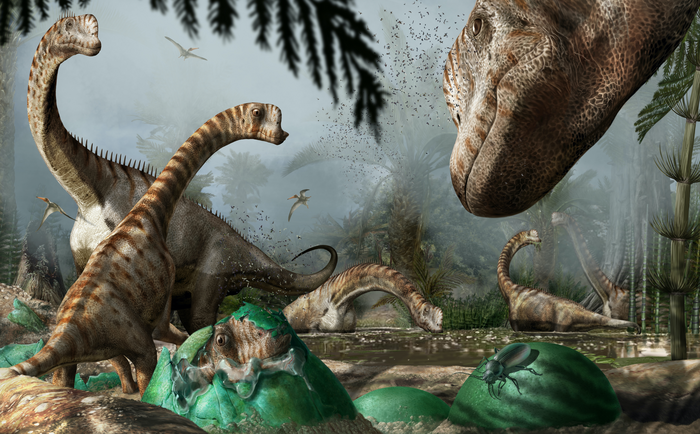
Fossil analysis reveals new details about Europasaurus
In a new study led by the University of Vienna, researchers have revealed the first detailed description of the neuroanatomy of Europasaurus. This herbivorous, long-necked dinosaur lived in the Late Jurassic on a small island in modern-day Germany.
“Macronaria, a group of mostly colossal sauropod dinosaurs, comprised the largest terrestrial vertebrates of Earth’s history,” wrote the study authors. “However, some of the smallest sauropods belong to this group as well. The Late Jurassic macronarian island dwarf Europasaurus holgeri is one of the most peculiar and best-studied sauropods worldwide.”
While some of these sauropods could reach up to 40 meters in length, Europasaurus had a much smaller body length of up to three meters.
Europasaurus, which lived about 154 million years ago, is the earliest known example of insular dwarfism. This is an evolutionary process in which large island-dwelling animals become smaller over time.
The experts used micro-computed tomography (micro-CT) to analyze braincase material of Europasaurus. By digitally reconstructing the inner ear, the team was able to learn more about the dinosaur’s hearing ability and behavior.
The fossil remains that were examined for the study belonged to specimens ranging from very young to fully grown. The experts found that the part of the inner ear responsible for hearing was relatively long. This indicates that Europasaurus had a good sense of hearing, and was likely very sociable and relied on intraspecific communication.
A different part of the inner ear that is associated with equilibrium was found to contain three tiny arches. The scientists noted that the inner ear cavities of very small specimens resembled the cavities of adults in form and size.
“This supposes that very young individuals of Europasaurus strongly relied on the ability to equilibrate already. Some considered skull remains were so tiny (~2 cm) that they may belong to hatchlings, which renders the species precocial,” explained study co-author Sebastian Stumpf.
The researchers explained that some sauropods weighed several tens of tons more than their newly-hatched offspring, which could be deadly for the young dinosaurs. Still yet, they said the hatchlings of Europasaurus may have immediately followed the herd.
The study is published in the journal eLife.
Image Credit: Commissioned artwork by Davide Bonadonna.
–—
By Chrissy Sexton, Earth.com Staff Writer
Check us out on EarthSnap, a free app brought to you by Eric Ralls and Earth.com.












